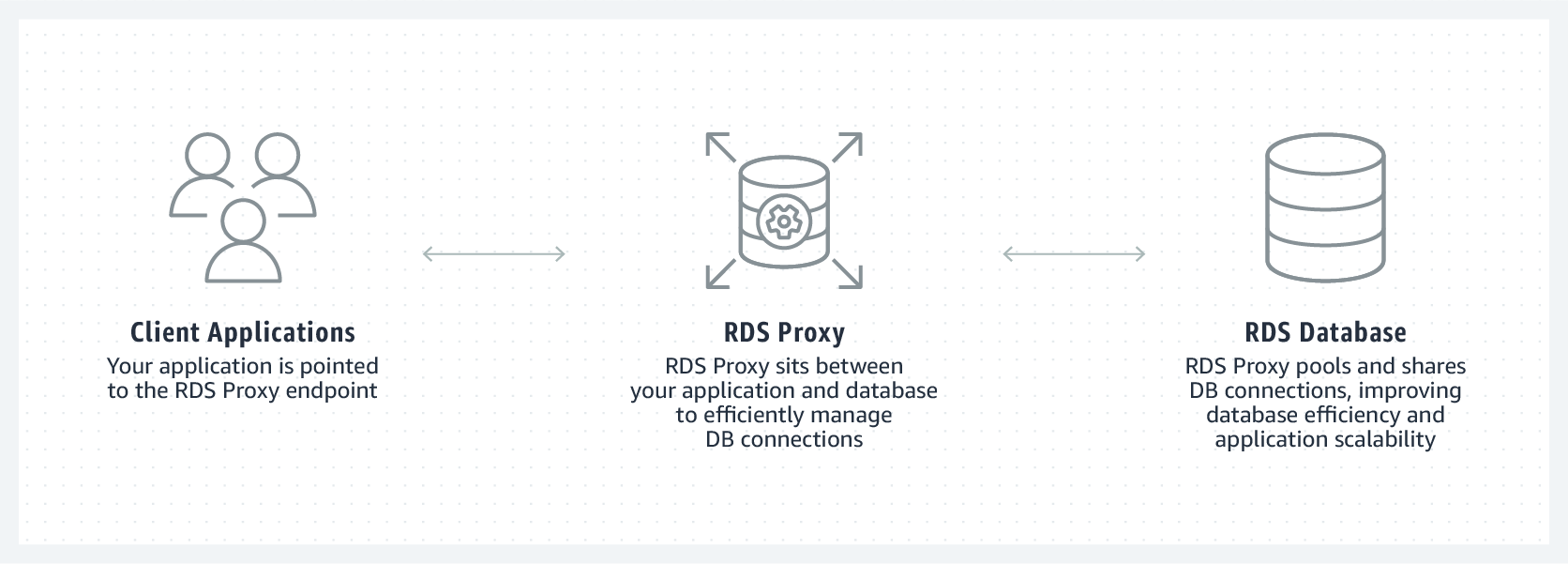Table of Contents
hide
AWS RDS Proxy
- fully managed, highly available database proxy for RDS that makes applications more secure, scalable, more resilient to database failures.
- allows apps to pool and share DB connections established with the database
- improves database efficiency by reducing stress on the database resources (e.g. CPU, RAM) by minimizing open connections and creation of new connections.
- is serverless and scales automatically to accommodate your workload.
- is highly available and deployed across multiple Availability Zones.
- increases resiliency to database failures by automatically connecting to a standby DB instance while preserving application connections.
- reduces RDS and Aurora failover time by up to 66%.
- protects the database against oversubscription by providing control over the number of database connections that are created.
- queues or throttles application connections that can’t be served immediately from the pool of connections.
- supports RDS (MySQL, PostgreSQL, MariaDB) and Aurora
- is fully managed and there is no need to provision or manage any additional infrastructure.
- required no code changes for most apps, just need to point to the RDS proxy endpoint instead of the RDS endpoint
- enforce IAM Authentication for DB, and securely store credentials in AWS Secrets Manager
- is never publicly accessible (must be accessed from VPC)

AWS Certification Exam Practice Questions
- Questions are collected from Internet and the answers are marked as per my knowledge and understanding (which might differ with yours).
- AWS services are updated everyday and both the answers and questions might be outdated soon, so research accordingly.
- AWS exam questions are not updated to keep up the pace with AWS updates, so even if the underlying feature has changed the question might not be updated
- Open to further feedback, discussion and correction.
- A company migrated one of its business-critical database workloads to an Amazon Aurora Multi-AZ DB cluster. The company requires a very low RTO and needs to improve the application recovery time after database failover. Which approach meets these requirements?
- Set the max_connections parameter to 16,000 in the instance-level parameter group.
- Modify the client connection timeout to 300 seconds.
- Create an Amazon RDS Proxy database proxy and update client connections to point to the proxy endpoint.
- Enable the query cache at the instance level.
- A company is running a serverless application on AWS Lambda that stores data in an Amazon RDS for MySQL DB instance. Usage has steadily increased, and recently there have been numerous “too many connections” errors when the Lambda function attempts to connect to the database. The company already has configured the database to use the maximum max_connections value that is possible. What should a SysOps administrator do to resolve these errors?
- Create a read replica of the database. Use Amazon Route 53 to create a weighted DNS record that contains both databases.
- Use Amazon RDS Proxy to create a proxy. Update the connection string in the Lambda function.
- Increase the value in the max_connect_errors parameter in the parameter group that the database uses.
- Update the Lambda function’s reserved concurrency to a higher value.

2 thoughts on “AWS RDS Proxy”
Comments are closed.